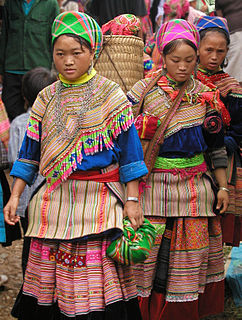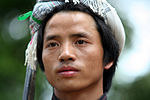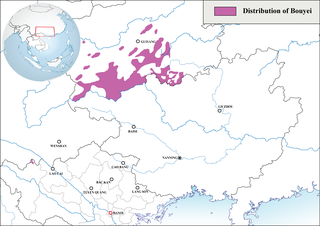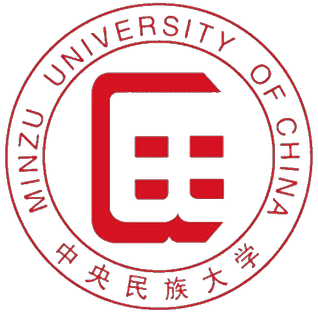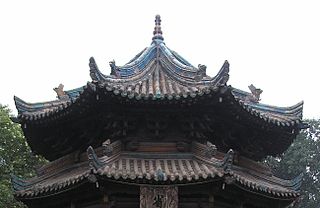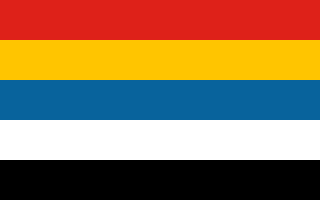Multiple ethnic groups populate China, where "China" is taken to mean areas controlled by either of the two states using "China" in their formal names, the People's Republic of China (China) and the Republic of China (Taiwan).

An ethnic group or an ethnicity, is a category of people who identify with each other based on similarities such as common ancestry, language, history, society, culture or nation. Ethnicity is usually an inherited status based on the society in which one lives. Membership of an ethnic group tends to be defined by a shared cultural heritage, ancestry, origin myth, history, homeland, language or dialect, symbolic systems such as religion, mythology and ritual, cuisine, dressing style, art or physical appearance.
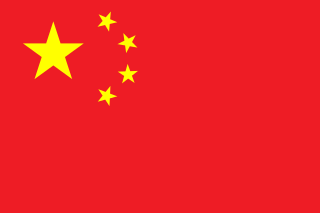
China, officially the People's Republic of China (PRC), is a country in East Asia and the world's most populous country, with a population of around 1.404 billion. Covering approximately 9,600,000 square kilometers (3,700,000 sq mi), it is the third- or fourth-largest country by total area. Governed by the Communist Party of China, the state exercises jurisdiction over 22 provinces, five autonomous regions, four direct-controlled municipalities, and the special administrative regions of Hong Kong and Macau.

Taiwan, officially the Republic of China (ROC), is a state in East Asia. Neighbouring states include the People's Republic of China (PRC) to the west, Japan to the northeast, and the Philippines to the south. Taiwan is the most populous state and largest economy that is not a member of the United Nations (UN).
Contents
- Ethnic groups recognized by the People's Republic of China
- Taiwanese aborigines
- "Undistinguished" ethnic minority groups
- Ethnic groups in Hong Kong and Macau
- Gallery
- See also
- References
- External links
The Chinese people refers to the Han 漢 people which is often misunderstood as Han Chinese, are the largest ethnic group, where (as of 2010) some 91.51% [1] of the population was classified as Han (~1.2 billion). Han is the name the Chinese have used for themselves since the Han Dynasty BC 202, whereas the name "Chinese" (used in the West) is of uncertain origin, but possibly derives ultimately from Sanskrit Cina-s "the Chinese," perhaps from the Qin dynasty. Besides the Han-Chinese majority of 92%, 55 other ethnic (minority) groups are categorized in present China, numbering approximately 105 million people (8%), mostly concentrated in the bordering northwest, north, northeast, south, and southwest but with some in central interior areas.

The Han Chinese, Hanzu, Han people, are an East Asian ethnic group and nation native to China. They constitute the world's largest ethnic group, making up about 18% of the global population. The estimated 1.3 billion Han Chinese people are mostly concentrated in mainland China and in Taiwan. Han Chinese people also make up three quarters of the total population of Singapore.
The major minority ethnic groups in China are Zhuang (16.9 million), Hui (10.5 million), Manchu (10.3 million), Uyghur (10 million), Miao (9.4 million), Yi (8.7 million), Tujia (8.3 million), Tibetan (6.2 million), Mongol (5.9 million), Dong (2.8 million), Buyei (2.8 million), Yao (2.7 million), Bai (1.9 million), Korean (1.8 million), Hani (1.6 million), Li (1.4 million), Kazakh (1.4 million), and Dai (1.2 million). [2]

The Zhuang people are an ethnic group who mostly live in the Guangxi Zhuang Autonomous Region in southern China. Some also live in the Yunnan, Guangdong, Guizhou and Hunan provinces. They form one of the 56 ethnic groups officially recognized by the People's Republic of China. With the Buyi, Tay–Nùng, and other northern Tai speakers, they are sometimes known as the Rau or Rao. Their population, estimated at 18 million people, makes them the largest minority in China.
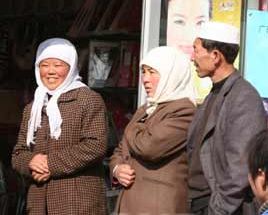
The Hui people are an East Asian ethnoreligious group predominantly composed of ethnically Sinitic adherents of the Muslim faith found throughout China, mainly in the northwestern provinces of the country and the Zhongyuan region. According to the 2011 census, China is home to approximately 10.5 million Hui people, the majority of whom are Chinese-speaking practitioners of Islam, though some may practise other religions. The 110,000 Dungan people of Kazakhstan and Kyrgyzstan are also considered part of the Hui ethnicity.
The Manchu are an ethnic minority in China and the people from Manchuria derives its name. They are sometimes called "red-tasseled Manchus", a reference to the ornamentation on traditional Manchu hats. The Later Jin (1616–1636), and Qing dynasty (1636–1912) were established and ruled by Manchus, who are descended from the Jurchen people who earlier established the Jin dynasty (1115–1234) in China.

